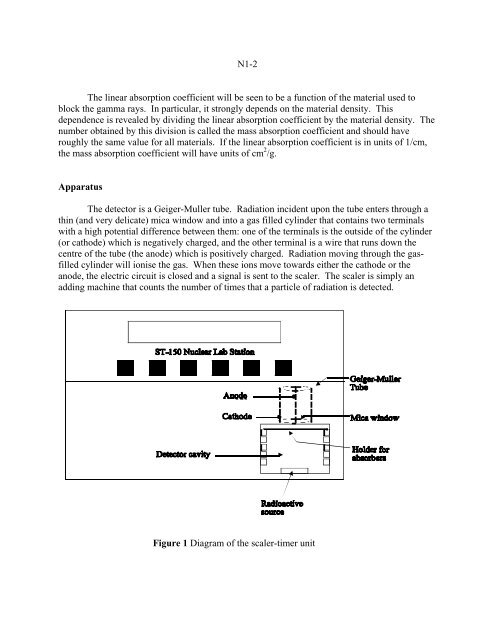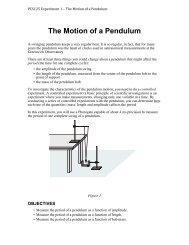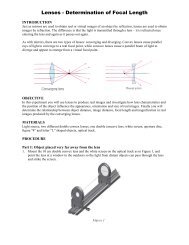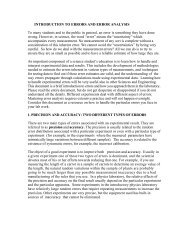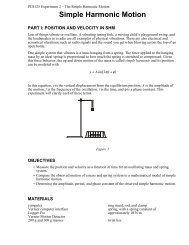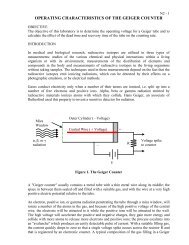Absorption of Gamma Rays - Ryerson Department of Physics
Absorption of Gamma Rays - Ryerson Department of Physics
Absorption of Gamma Rays - Ryerson Department of Physics
Create successful ePaper yourself
Turn your PDF publications into a flip-book with our unique Google optimized e-Paper software.
N1-2The linear absorption coefficient will be seen to be a function <strong>of</strong> the material used toblock the gamma rays. In particular, it strongly depends on the material density. Thisdependence is revealed by dividing the linear absorption coefficient by the material density. Thenumber obtained by this division is called the mass absorption coefficient and should haveroughly the same value for all materials. If the linear absorption coefficient is in units <strong>of</strong> 1/cm,the mass absorption coefficient will have units <strong>of</strong> cm 2 /g.ApparatusThe detector is a Geiger-Muller tube. Radiation incident upon the tube enters through athin (and very delicate) mica window and into a gas filled cylinder that contains two terminalswith a high potential difference between them: one <strong>of</strong> the terminals is the outside <strong>of</strong> the cylinder(or cathode) which is negatively charged, and the other terminal is a wire that runs down thecentre <strong>of</strong> the tube (the anode) which is positively charged. Radiation moving through the gasfilledcylinder will ionise the gas. When these ions move towards either the cathode or theanode, the electric circuit is closed and a signal is sent to the scaler. The scaler is simply anadding machine that counts the number <strong>of</strong> times that a particle <strong>of</strong> radiation is detected.Figure 1 Diagram <strong>of</strong> the scaler-timer unit


